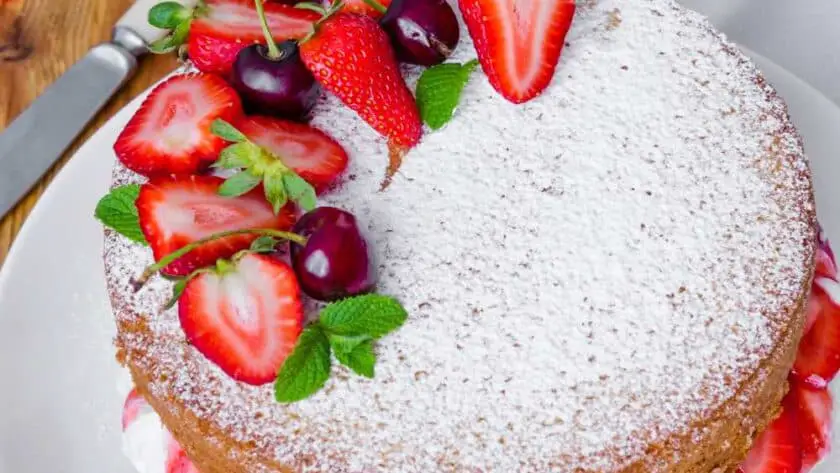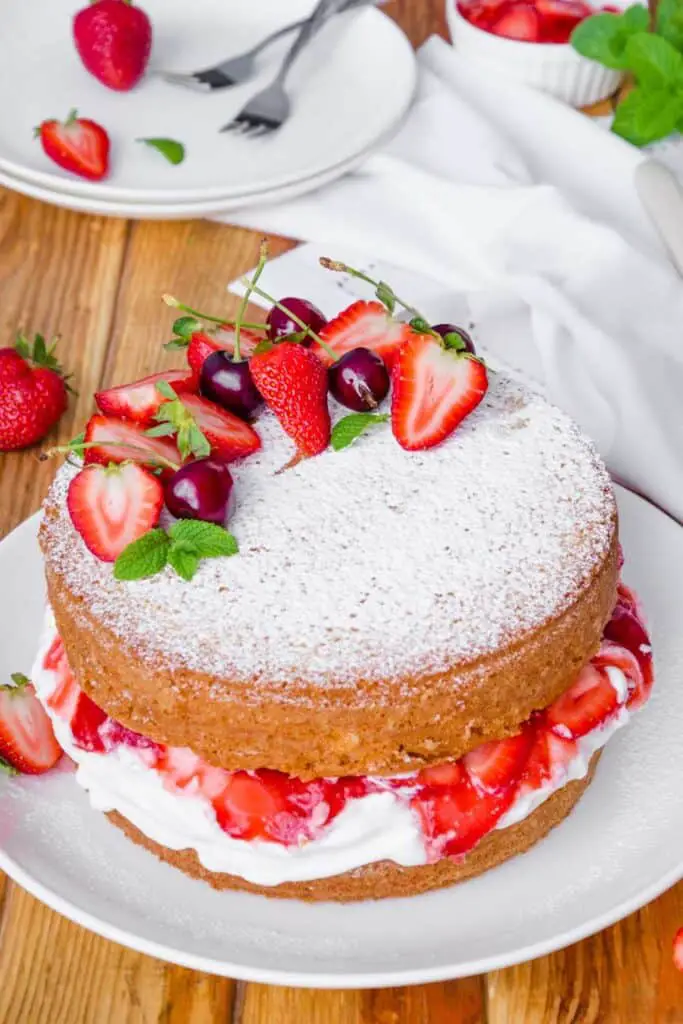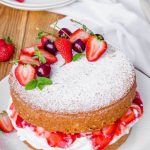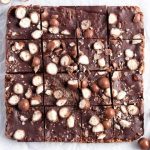Nigella Lawson’s Victoria Sponge is a classic British cake that is both light and indulgent. This simple yet elegant sponge cake is sandwiched with a layer of jam and whipped cream, making it perfect for afternoon tea, birthdays, or any special occasion. Nigella’s recipe focuses on ease and timeless flavor, creating a soft, buttery sponge that is bound to impress.
What is Nigella’s Victoria Sponge?
Nigella’s Victoria Sponge is a traditional British sponge cake made with basic ingredients like butter, sugar, eggs, and self-raising flour. The sponge is light, fluffy, and perfectly balanced with a rich cream filling and fruity jam. It’s named after Queen Victoria, who is said to have enjoyed a slice with her afternoon tea. This cake is known for its simplicity and versatility, making it a beloved staple in British baking.

Other Popular Recipes
Why You Should Try This Recipe
- Classic and timeless: A traditional British cake that is simple yet elegant.
- Light and fluffy: The sponge has a tender crumb that pairs beautifully with the cream and jam filling.
- Perfect for any occasion: Whether it’s for tea, birthdays, or celebrations, this cake fits every event.
- Easy to make: With basic ingredients, this recipe is accessible for bakers of all skill levels.
- Customizable: You can change the filling or add fresh fruit to make it your own.
Ingredients Needed to Make Nigella’s Victoria Sponge
For the Sponge:
- Self-raising flour: 225g
- Caster sugar: 225g
- Butter: 225g, softened
- Eggs: 4 large
- Baking powder: 1 teaspoon
- Vanilla extract: 1 teaspoon (optional)
For the Filling:
- Strawberry or raspberry jam: 6-8 tablespoons
- Double cream or buttercream: 300ml, whipped
- Icing sugar: For dusting
Equipment
- 2 x 20cm (8-inch) round cake tins
- Electric mixer or hand whisk
- Mixing bowls
- Spatula
- Baking parchment
Instructions to Make Nigella’s Victoria Sponge
Step 1: Prepare the Cake Tins
- Preheat the oven: Set the oven to 180°C (160°C fan)/350°F/gas mark 4.
- Prepare the tins: Grease and line two 20cm round cake tins with baking parchment.
Step 2: Make the Cake Batter
- Cream the butter and sugar: In a large mixing bowl, beat the softened butter and caster sugar together until light and fluffy using an electric mixer.
- Add the eggs: Beat in the eggs one at a time, ensuring each is fully incorporated before adding the next. Add the vanilla extract if using.
- Fold in the dry ingredients: Sift the self-raising flour and baking powder into the mixture and gently fold it in using a spatula. Be careful not to overmix the batter.
Step 3: Bake the Sponge
- Divide the batter: Evenly divide the batter between the two prepared tins and smooth the tops.
- Bake: Place the tins in the preheated oven and bake for 20-25 minutes, or until the cakes are golden and springy to the touch. A skewer inserted into the center should come out clean.
- Cool the cakes: Allow the cakes to cool in the tins for 5 minutes before turning them out onto a wire rack to cool completely.
Step 4: Fill and Assemble the Cake
- Spread the filling: Once the cakes have completely cooled, spread one cake with a generous layer of strawberry or raspberry jam. Whip the cream until soft peaks form and spread it over the jam layer.
- Sandwich the cakes: Place the second cake on top of the first to create a sandwich, pressing gently to secure.
Step 5: Decorate and Serve
- Dust with icing sugar: For a classic finish, dust the top of the cake with a light layer of icing sugar before serving.
- Slice and serve: Enjoy the cake with a cup of tea or coffee for a traditional British treat.

What Goes Well With Nigella’s Victoria Sponge?
- Fresh berries: Serve with fresh strawberries or raspberries for a fruity complement.
- Whipped cream: Add extra whipped cream on the side for a creamy touch.
- Lemon curd: Swap the jam with lemon curd for a tangy twist.
- Tea or coffee: This cake is perfect with a hot cup of tea or coffee.
- Custard: For a comforting dessert, serve with warm custard.
Expert Tips for Making the Best Victoria Sponge
- Use room temperature ingredients: Ensure the butter and eggs are at room temperature for a smoother batter.
- Don’t overmix: Gently fold in the flour to avoid overmixing, which can result in a dense cake.
- Test for doneness: Insert a skewer into the center of the cake – if it comes out clean, the cake is ready.
- Cool completely before filling: Allow the cakes to cool fully before adding the cream to prevent it from melting.
Easy Variations of Nigella’s Victoria Sponge
- Lemon Victoria Sponge: Add the zest of two lemons to the batter and use lemon curd as the filling.
- Chocolate Victoria Sponge: Substitute 50g of self-raising flour with cocoa powder for a chocolate version.
- Gluten-free option: Use a gluten-free self-raising flour blend to make this cake suitable for gluten-intolerant guests.
- Almond Victoria Sponge: Add a tablespoon of ground almonds to the batter for a nutty flavor.
Best Practices to Store Nigella’s Victoria Sponge
- Room temperature storage: Store the cake in an airtight container at room temperature for up to 2 days.
- Refrigeration: If filled with cream, store the cake in the fridge for up to 3 days.
- Freezing: You can freeze the sponge layers before filling. Wrap each layer tightly in cling film and freeze for up to 2 months. Thaw at room temperature before assembling.
Best Practices to Reheat Nigella’s Victoria Sponge
- Microwave reheating: Reheat individual slices in the microwave for 10-15 seconds on medium power for a quick refresh.
- Oven reheating: Warm slices in a 150°C (300°F) oven for 5-10 minutes to revive their freshness.
How Can I Make Victoria Sponge Healthier?
- Reduce sugar: You can reduce the sugar by about 15% without sacrificing too much sweetness.
- Use whole-wheat flour: Swap part of the self-raising flour for whole-wheat flour to add more fiber.
- Lighten the filling: Replace the whipped cream with a lower-fat version or Greek yogurt for a healthier option.
Nutrition Value (per serving):
- Calories: 340 kcal
- Carbohydrates: 45g
- Protein: 6g
- Fat: 16g
- Fiber: 1g
FAQs
Can I freeze Nigella’s Victoria Sponge?
Yes, you can freeze the sponge layers before adding the filling. Wrap each layer tightly in cling film and foil, then freeze for up to 2 months. Thaw the layers at room temperature before assembling with jam and cream.
How do I make my Victoria sponge cake rise evenly?
To ensure your Victoria sponge rises evenly, make sure your oven is fully preheated before baking, and avoid opening the door during the first 20 minutes. Spread the batter evenly in the tins, and gently tap the tins on the counter to release any trapped air bubbles.
Why is my Victoria sponge dense?
A dense Victoria sponge can be caused by overmixing the batter, which knocks out the air needed for a light texture. Ensure you fold the flour gently into the batter and avoid overbeating once the flour is added.
Can I use plain flour instead of self-raising flour for Victoria sponge?
Yes, you can use plain flour instead of self-raising flour, but you will need to add 2 teaspoons of baking powder for every 225g of plain flour to achieve the same rise.
More By British Baking Recipes
Print
Nigella Victoria Sponge
- Prep Time: 15
- Cook Time: 25
- Total Time: 40 minutes
- Yield: 8
- Category: Dessert
- Method: Baking
- Cuisine: British
Description
Nigella’s Victoria Sponge is a traditional British sponge cake made with basic ingredients like butter, sugar, eggs, and self-raising flour. The sponge is light, fluffy, and perfectly balanced with a rich cream filling and fruity jam. It’s named after Queen Victoria, who is said to have enjoyed a slice with her afternoon tea. This cake is known for its simplicity and versatility, making it a beloved staple in British baking.
Ingredients
For the Sponge:
- Self-raising flour: 225g
- Caster sugar: 225g
- Butter: 225g, softened
- Eggs: 4 large
- Baking powder: 1 teaspoon
- Vanilla extract: 1 teaspoon (optional)
For the Filling:
- Strawberry or raspberry jam: 6-8 tablespoons
- Double cream or buttercream: 300ml, whipped
- Icing sugar: For dusting
Instructions
Step 1: Prepare the Cake Tins
- Preheat the oven: Set the oven to 180°C (160°C fan)/350°F/gas mark 4.
- Prepare the tins: Grease and line two 20cm round cake tins with baking parchment.
Step 2: Make the Cake Batter
- Cream the butter and sugar: In a large mixing bowl, beat the softened butter and caster sugar together until light and fluffy using an electric mixer.
- Add the eggs: Beat in the eggs one at a time, ensuring each is fully incorporated before adding the next. Add the vanilla extract if using.
- Fold in the dry ingredients: Sift the self-raising flour and baking powder into the mixture and gently fold it in using a spatula. Be careful not to overmix the batter.
Step 3: Bake the Sponge
- Divide the batter: Evenly divide the batter between the two prepared tins and smooth the tops.
- Bake: Place the tins in the preheated oven and bake for 20-25 minutes, or until the cakes are golden and springy to the touch. A skewer inserted into the center should come out clean.
- Cool the cakes: Allow the cakes to cool in the tins for 5 minutes before turning them out onto a wire rack to cool completely.
Step 4: Fill and Assemble the Cake
- Spread the filling: Once the cakes have completely cooled, spread one cake with a generous layer of strawberry or raspberry jam. Whip the cream until soft peaks form and spread it over the jam layer.
- Sandwich the cakes: Place the second cake on top of the first to create a sandwich, pressing gently to secure.
Step 5: Decorate and Serve
- Dust with icing sugar: For a classic finish, dust the top of the cake with a light layer of icing sugar before serving.
- Slice and serve: Enjoy the cake with a cup of tea or coffee for a traditional British treat.



